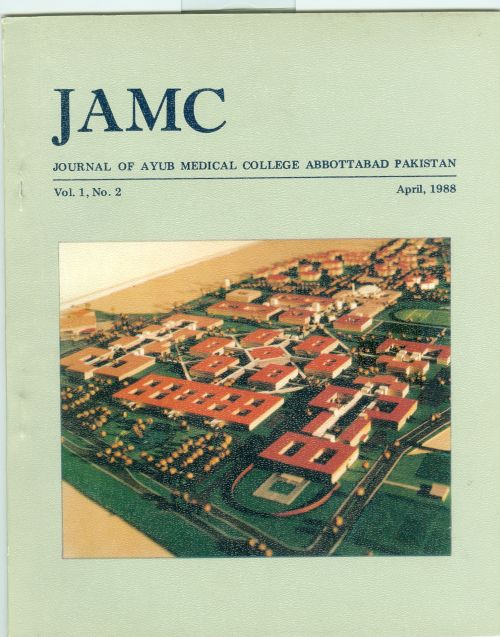INTESTINAL MYIASIS (MAGGOT INFESTATION OF INTESTINES)
Abstract
Infection with maggots or fly larva are seen all over the world and results frominvasion of tissues and organs by the larvae of various species of flies like Musca,
Fannia, Chrysinia and Calliphora.
Myiasis can involve skin, eyes, connective tissues, nasopharynx, intestines and
urethra. Intestinal myiasis, a rare clinical entity results from ingestion of food
contaminated with the eggs or larvae of flies, some of which survive passage through
the stomach and later mature in the intestines before they are passed in the stools.
Intestinal myiasis, sometimes results from deposition of larvae by the flies round the
anus of the patient and such larvae may crawl into the rectum to complete their feeding
inside the body. Children are particularly vulnerable to myiasis due to their out-door
exposure or ingestion of fly contaminated food.
Published reports about intestinal myiasis from this part of the world are scanty
because unless maggots are seen by the physician himself diagnosis cannot be made.
During the last five years two well documented cases of this condition were diagnosed
and treated by the author, the summary of these is as under:
References
Behrman, R.E. and Vanghan, V.C. Nelson Textbook of Paediatrics ed 12. W.B.
Saunders Co., Tokyo. 872.
Bisley, G.G. A case of intra-ocular myiasis in man. East African Med. J. 1972; 49,
: 768-771.
Hira, P.R. Rectal myiasis. East African MED. J. 1977; 54, 4:224-226.
Wilcocks, C. and Manson-Bahr PEC. Manson's Tropical Diseases ed. 17. Bailliere
Tindall London. 1125.
Downloads
How to Cite
Issue
Section
License
Journal of Ayub Medical College, Abbottabad is an OPEN ACCESS JOURNAL which means that all content is FREELY available without charge to all users whether registered with the journal or not. The work published by J Ayub Med Coll Abbottabad is licensed and distributed under the creative commons License CC BY ND Attribution-NoDerivs. Material printed in this journal is OPEN to access, and are FREE for use in academic and research work with proper citation. J Ayub Med Coll Abbottabad accepts only original material for publication with the understanding that except for abstracts, no part of the data has been published or will be submitted for publication elsewhere before appearing in J Ayub Med Coll Abbottabad. The Editorial Board of J Ayub Med Coll Abbottabad makes every effort to ensure the accuracy and authenticity of material printed in J Ayub Med Coll Abbottabad. However, conclusions and statements expressed are views of the authors and do not reflect the opinion/policy of J Ayub Med Coll Abbottabad or the Editorial Board.
USERS are allowed to read, download, copy, distribute, print, search, or link to the full texts of the articles, or use them for any other lawful purpose, without asking prior permission from the publisher or the author. This is in accordance with the BOAI definition of open access.
AUTHORS retain the rights of free downloading/unlimited e-print of full text and sharing/disseminating the article without any restriction, by any means including twitter, scholarly collaboration networks such as ResearchGate, Academia.eu, and social media sites such as Twitter, LinkedIn, Google Scholar and any other professional or academic networking site.










